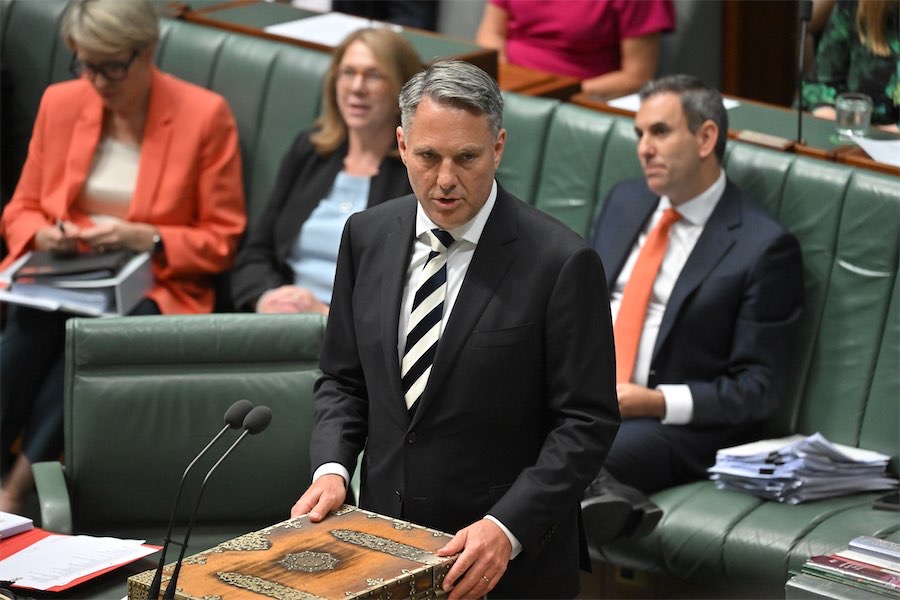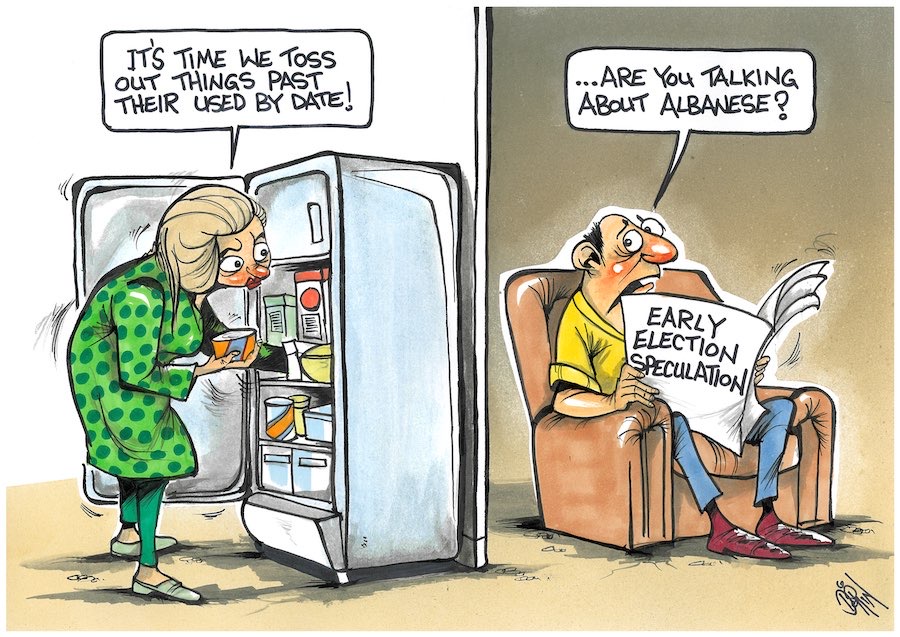
Treasurer Andrew Barr argues that, as the economy grows over time, the value of debt relative to the size of the economy will decline. JON STANHOPE and KHALID AHMED believe that view has no merit. Here they explain why…
OVER recent weeks, we have compared the key debt metrics and the operating budget trends in successive ACT budgets over the past two decades and the medium-term outlook in the ACT government’s budget forecasts.
Following our review of these trends we concluded that if the ACT government doesn’t refrain from further debt accumulation, a rating downgrade is inevitable.
A rating downgrade is a clear signal to potential lenders that the risk of lending to the subject entity has increased and, accordingly, the lenders will almost certainly charge a risk premium through a higher interest rate. It is also an unambiguous signal to the entity to address its debt servicing and repayment capacity problems.
The institutional arrangements at a government level in Australia are underpinned by major financial transfers from the Commonwealth to the states and territories. This provides significant confidence to lenders.
For the ACT, the fact that the Commonwealth Public Service is headquartered in the territory and employs almost half of our workforce is an added advantage.
However, those arrangements are unlikely to come to the rescue of a jurisdiction if it (say) faces a credit-rating downgrade but chooses to not change its financial management policies.
Being placed on negative watch by rating agencies, or to suffer a rating downgrade are not uncommon for sub-national governments in Australia.
However, it is also not uncommon for the poor state of a jurisdiction’s finances to be a major factor in electors voting a government out of office. It is, therefore, not surprising that most state and territory governments facing major budget pressures and financial decline, respond with both urgency and determination.
For example, over the last decade there have been Commissions of Audit in NSW and Queensland (2012 and 2013 respectively), an Independent Review of the State Finances in Victoria (2011), and a Budget Repair Plan in the NT (2019).
The ACT’s Strategic and Functional Review (2007) was different with its rationale being to focus on expenditure growth for priority services. The ACT had no “debt problem” at that time. However, a desire for greater discipline in expenditure, efficiency improvements and a focus on core government functions were themes that the Functional Review had in common with other reviews.
The basis of the ACT government’s escalating debt problem is its failure to control expenditure growth below revenue growth, but nevertheless continuing to fund capital expenditure through borrowings.
A key plank of the fiscal strategy in the decade to 2011, and indeed under the Carnell Liberal government from 1995 to 2001, was “no new borrowings“, a strategy reflected in successive annual budgets. This was underpinned by a policy to (a) achieve a budget surplus, and (b) limit capital spending to capacity provided within the cash surplus in the budget. This approach was also adopted to ensure that provisions of the Financial Management Act relating to Prudential Financial Management were honoured.
It is surprising to us that the deterioration in the ACT operating budget and the degradation of debt sustainability, as the two are inextricably linked, has been allowed to persist for a decade.
The ACT government appears to hold a view that either the problem will disappear over time or that no one in Canberra really cares. The argument proffered by Treasurer Andrew Barr, in his media comments on the issue, is that as the economy grows over time, the value of debt relative to the size of the economy will decline. We believe, with respect, that that view has no merit.
It is a question of simple arithmetic that if the debt is growing at a rate greater than the economic growth rate, which it currently is, then debt as a proportion of the Gross State Product (GSP) will continue to rise. Indeed, the government’s own Budget Review forecasts indicate that the gross debt to GSP ratio will rise from 18 per cent in 2020-21 to 24 per cent in 2024-25.
Arguments are made from time to time that the General Government Sector should not carry any debt, but should aim for balanced budgets, and that any infrastructure projects being financed through borrowings have a revenue stream sufficient to repay the debt.
We acknowledge that there are occasions when borrowings may be required to manage external shocks or to fund significant infrastructure projects. However, in such cases there should be a plan to repay the debt over an appropriate time frame.
It is misleading to suggest, and delusional to think, that the ACT government’s debt problem will solve itself. It is a consequence of persistent structural budget deficits and a flawed fiscal strategy. These problems will not fix themselves. It will require some easy, but mostly hard decisions to return the budget to surplus and to focus on essential infrastructure spending with high benefit to cost ratios, such as public health, education and social housing.
The government’s failure to address its structural budget problem has also created a disturbing ethical issue – the consequences of the transfer of the tremendous burden of our expansive borrowings to future generations of Canberrans. A child in primary school in Canberra today will be paying for this government’s budget management until they retire. If the ACT government does not act now to bring its spending under control, it is highly likely that their children will be similarly saddled with repaying our debts.
It is ironic that the Greens, whose raison d’être is to avoid the intergenerational transfer of costs, have been not just complicit but active participants in placing this massive burden on future generations of Canberrans.
Who can be trusted?
In a world of spin and confusion, there’s never been a more important time to support independent journalism in Canberra.
If you trust our work online and want to enforce the power of independent voices, I invite you to make a small contribution.
Every dollar of support is invested back into our journalism to help keep citynews.com.au strong and free.
Thank you,
Ian Meikle, editor




Leave a Reply